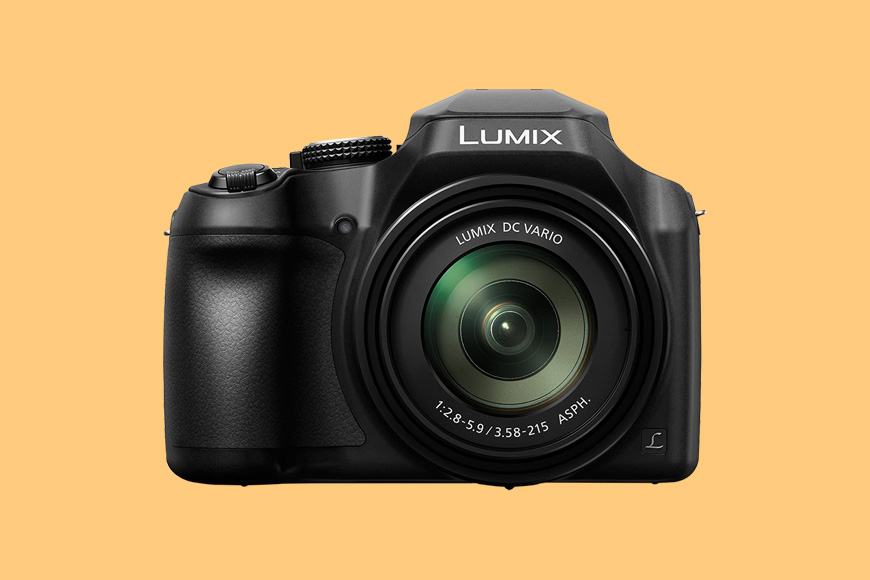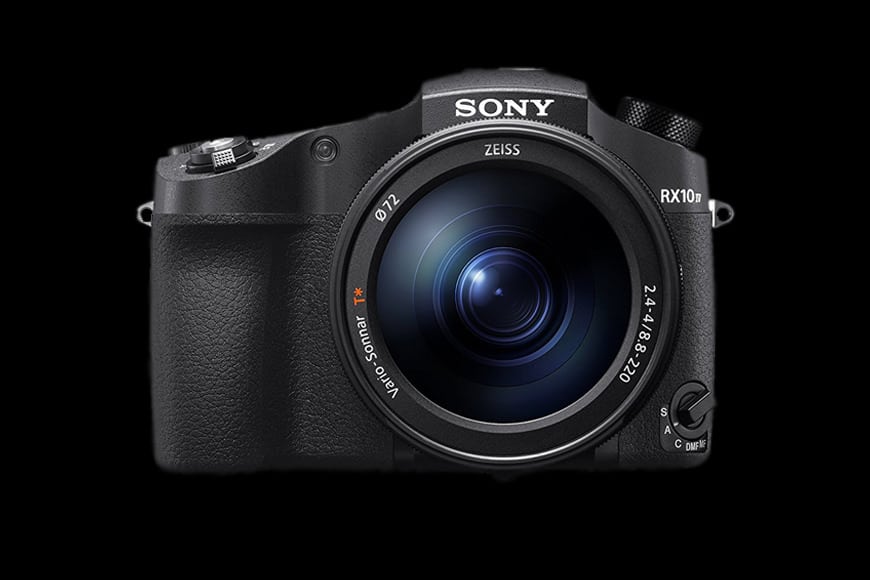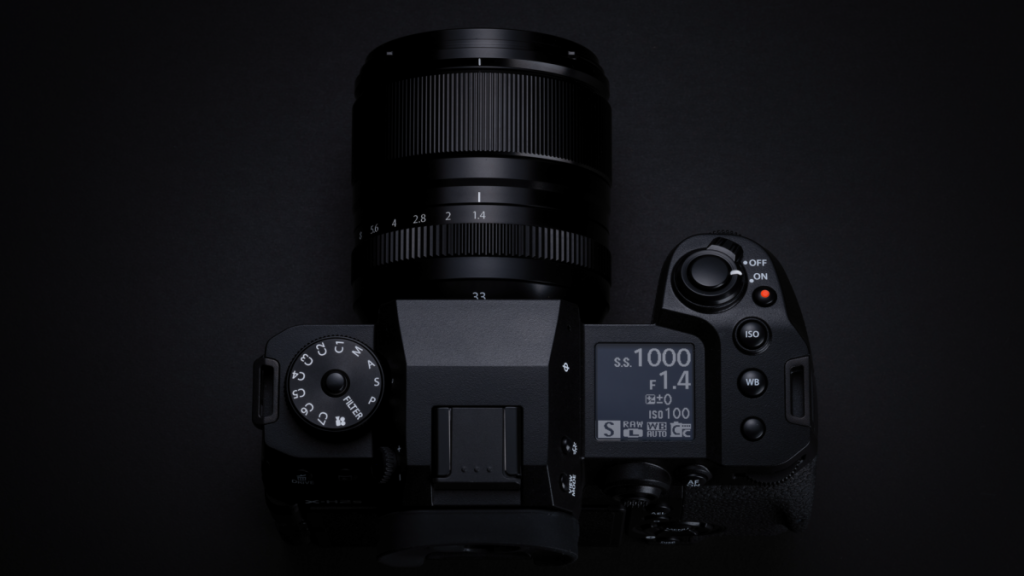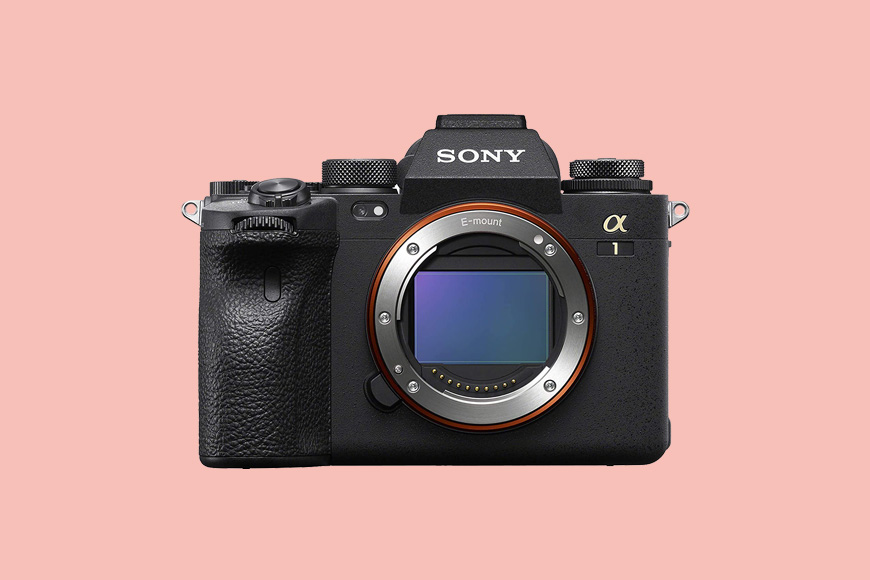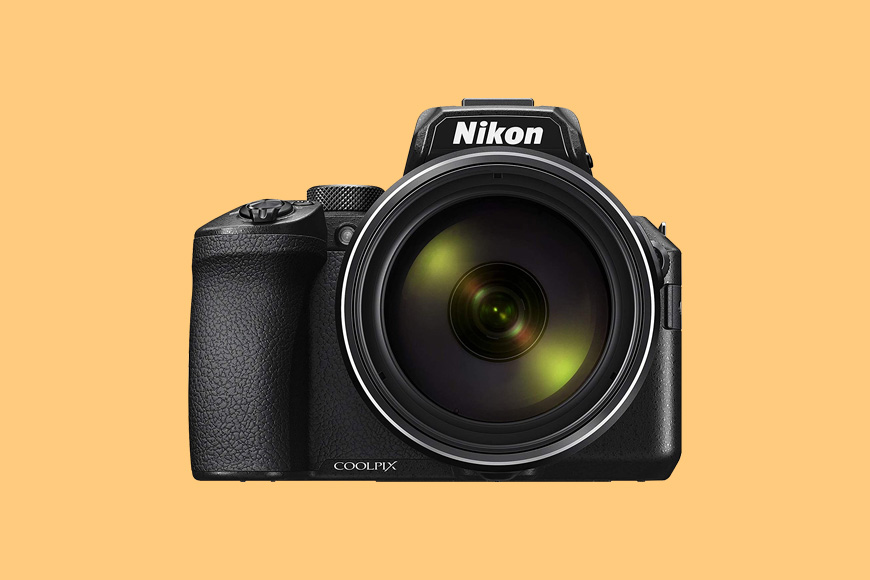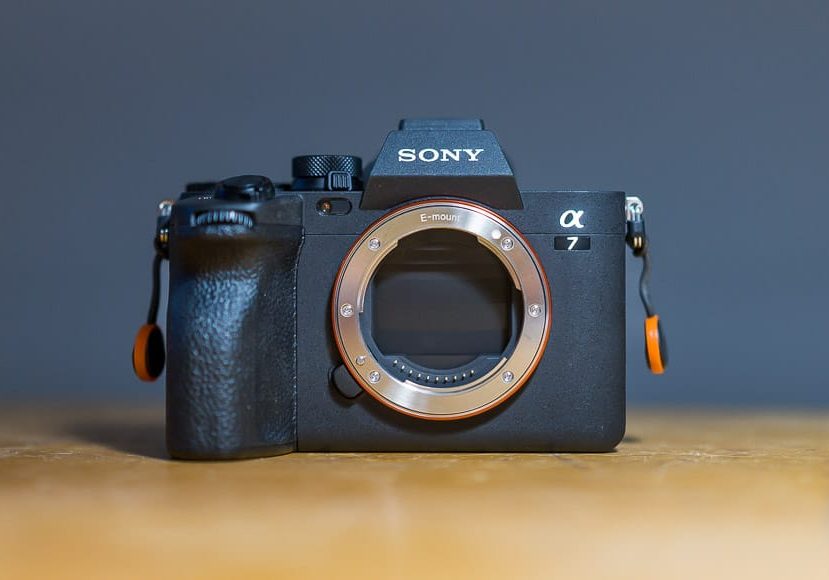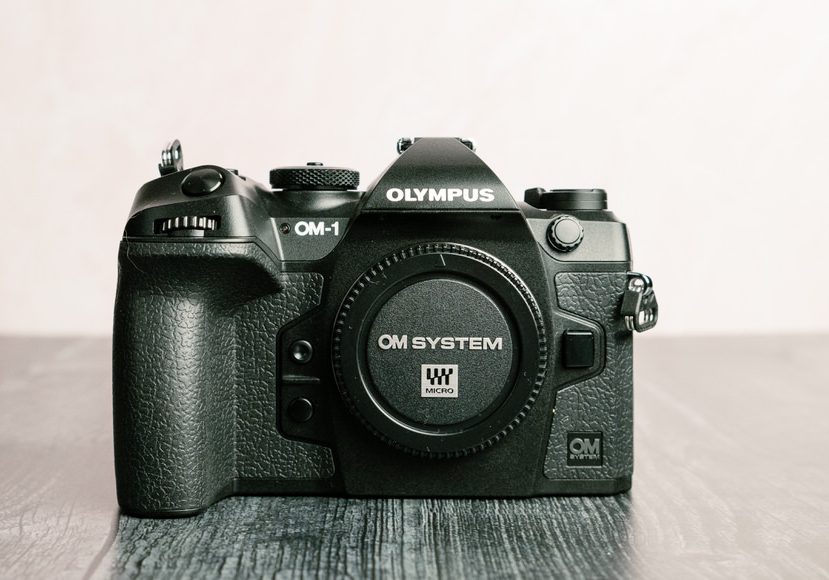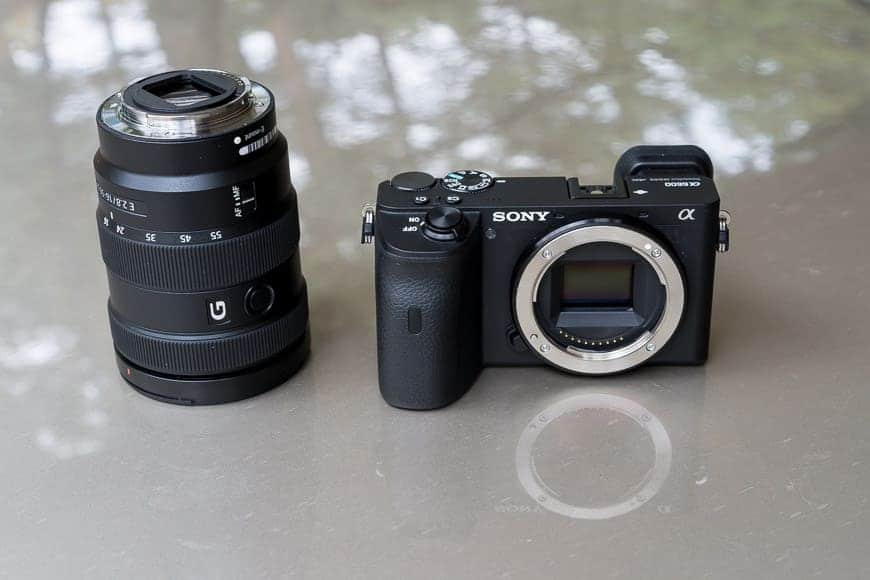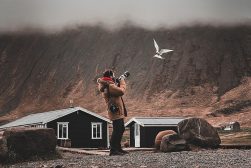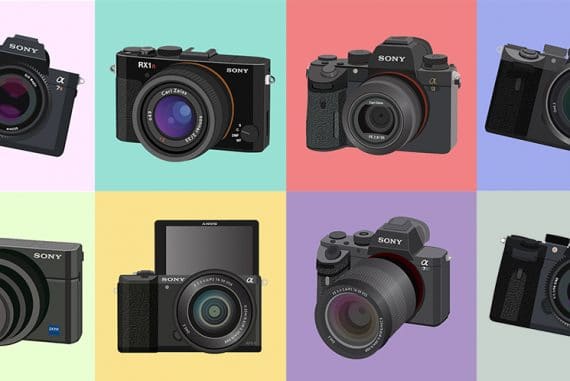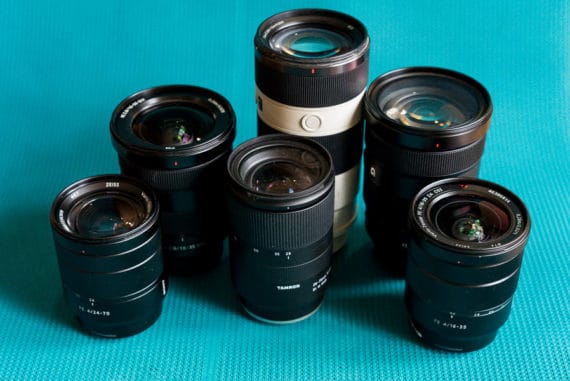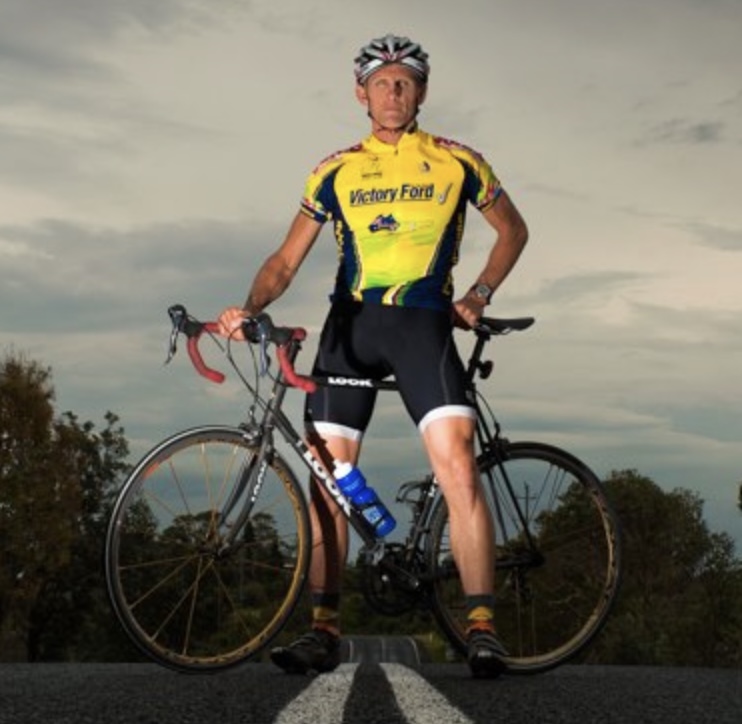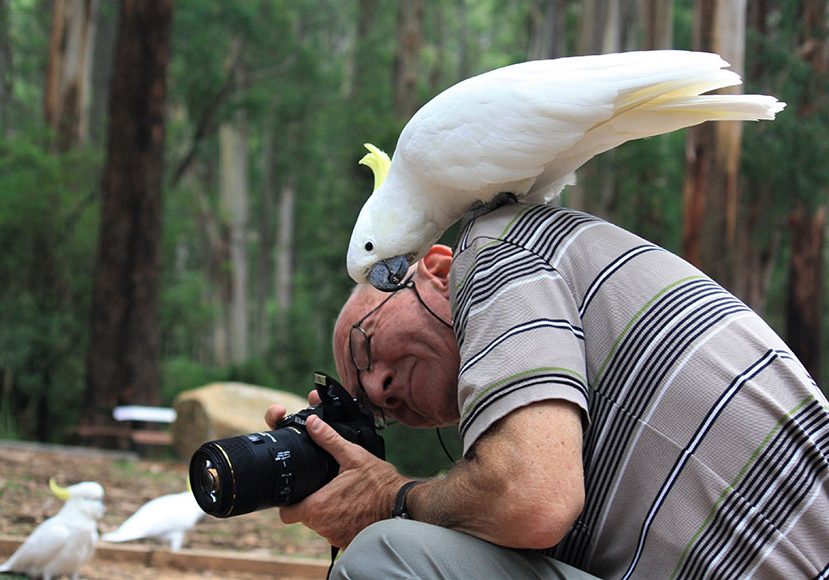
9 Best Cameras for Bird Photography in 2023
Take flight with our curated list of top cameras that are perfectly tailored to capture every feathered moment of your birding outings in stunning detail.
This guide will take you through some of the best cameras for birding.
Photographing birds can be challenging, as you have no control over them.
Birds might move fast, they might be far away, and they might be in relatively inaccessible places.
One thing you can control, though, if you’re into bird photography, is your camera.
The camera and lenses for bird photography you choose will determine the quality of bird shots you get.
You should also read our guides to taking better photos of birds in flight, bird photography and the best spotting scopes for birding.
Top features to look out for when choosing cameras to photograph birds:
- High-resolution sensor
- Fast autofocus system
- High burst shooting rate
- Effective image stabilization
- Long zoom/telephoto lens capability
- Rugged weather-sealed body
- High ISO performance
- Quick response time
- Lightweight for mobility
Table of Contents
What is the Best Camera for Birding in 2023?
| Image | Product | Features | |
|---|---|---|---|
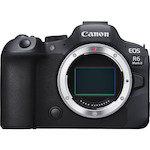 | Canon EOS R6 IIBEST ENTHUSIAST CAMERA |
| Check AMAZON Price → Check B&H Price → |
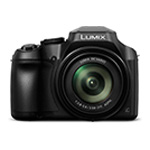 | Panasonic LUMIX FZ80BEST BUDGET |
| CHECK AMAZON PRICE → |
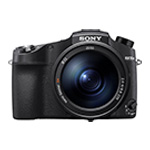 | Sony Cyber‑Shot RX10 IV BEST BRIDGE CAMERA |
| Check AMAZON Price → Check B&H Price → |
 | Fuji X-H2S BEST APS-C CAMERA |
| Check AMAZON Price → Check B&H Price → |
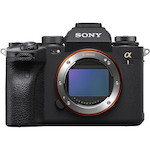 | Sony A1 BEST PROFESSIONAL CAMERA |
| Check AMAZON Price → Check B&H Price → |
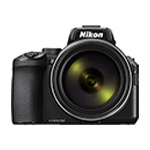 | Nikon COOLPIX P950BEST BIRDING CAMERA UNDER $800 |
| Check AMAZON Price → Check B&H Price → |
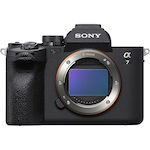 | Sony a7 IVBEST HYBRID CAMERA |
| Check AMAZON Price → Check B&H Price → |
 | OM System OM-1BEST MICRO FOUR THIRDS CAMERA |
| Check AMAZON Price → Check B&H Price → |
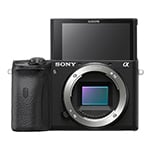 | Sony a6600BEST COMPACT CAMERA |
| Check AMAZON Price → Check B&H Price → |
Canon EOS R6 II (Best Enthusiast Mirrorless Camera for Bird Photography)
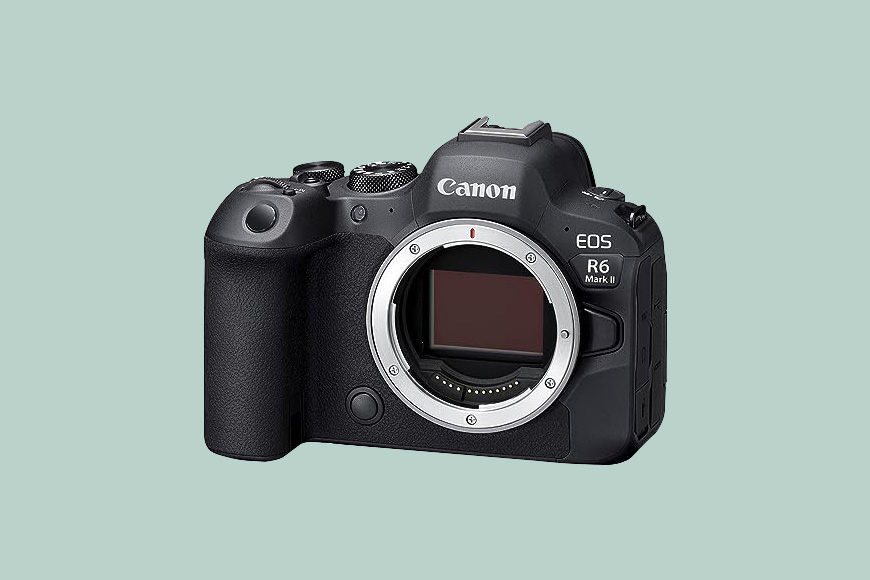
- High dynamic range
- Outstanding image quality
- Excellent autofocus
- Powerful processor
- Weather sealed
- Cannot use third-party lenses on the RF mount
The Canon EOS R6 Mark II is our choice for the best enthusiast camera for bird photography.
That’s because whether you’re into bird photography, cameras, or both, this Canon mirrorless camera can do it all.
It has a 24-megapixel full-frame sensor, with a DIGIC X processor.
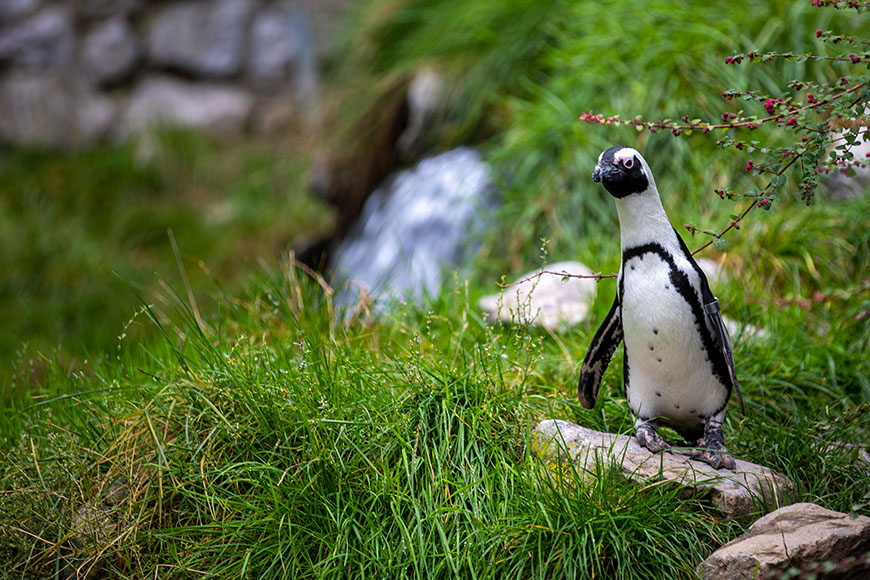
Canon EOS R6 | Muhammed Zafer Yahsi
Those specs give you a fast sensor readout, one of the fastest drive speeds you can find, a shooting speed of up to 40fps, and a great dynamic range.
That, in turn, leads to excellent low-light performance. You can shoot at high ISOs with minimal noise, making the Canon R6 Mark II perfect for taking photos of birds migrating in the darker ideas.
And, the high-resolution RAW files the camera gives you, allow you to rescue details in underexposed shadows or overexposed highlights.
Plus, it has great in-body stabilisation, with 8 stops of IS – ideal if you forget your tripod for birding shots.
The quality of the images it creates, in terms of colour, is of the high standard photographers have come to expect from Canon.
The R6 Mark II has top-of-the-range autofocus – over 1000 points of active phase, and various tracking modes (including eye and animals – both essential for bird photography) – which work well in all light conditions with even fast-moving subjects.
It’s well-built, too, physically. It’s weather-sealed, ergonomic, with dual card slots, and a vari-angle touchscreen LCD.
Panasonic LUMIX FZ80 (Best Budget Camera for Bird Photography)
- User-friendly
- Affordable
- Solid build
- Shoots 4K
- Fixed rear screen
- Low-light performance lacking
The Panasonic LUMIX FZ80, at under $500, is the best budget option.
It has a massive 60x optical zoom, plus a 60x digital zoom, which gives you a focal range of 20-1200 mm. And the aperture is a constant f/2.8.
If you don’t mind cropping your image, you could end up with an effective focal length of around 6700 mm – obviously ideal for taking photos of birds in flight.
The camera has an excellent in-built image stabilisation and shoots RAW files at up to 30fps in burst mode.
The quality of the images it produces is decent, although they can get a little noisy above 800 ISO.
And the overall build quality is great. It has an ergonomic design that makes it comfortable to shoot with for long sessions.
Sony Cyber‑Shot RX10 IV (Best Bridge Camera for Bird Photography)
- Amazing value for money
- Fun to use
- High-quality images
- Insanely fast
- Great autofocus
- Not the best in low light
- Poor battery life
This Sony is the kind of camera that sits between consumer-level and pro-level gear.
Although, to be honest, given the incredible quality of its features, it gives many high-end cameras a run for their money.
Its build quality is excellent. Its rugged, ergonomic, magnesium alloy body looks and feels like a DSLR in use.
With its 24-600mm zoom lens, it has a similar range as the Nikon Coolpix p950 (another of the best bridge cameras), although the Sony’s image quality is superior.
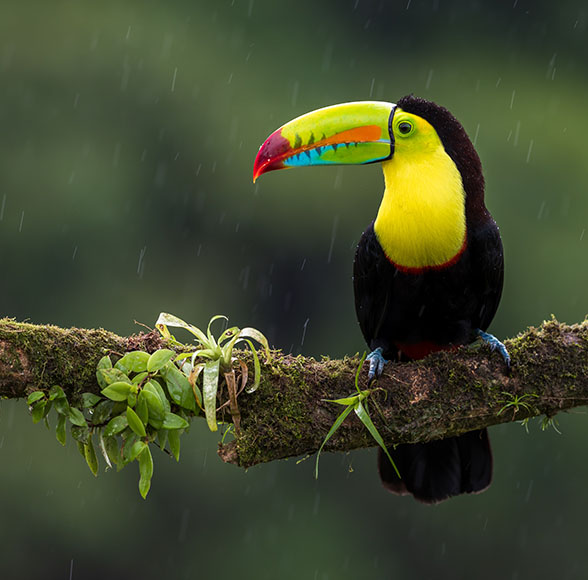
Zdeněk Macháček
It has 5.5 stop image stabilisation, a 20-megapixel backlit sensor, and, with a top shutter speed of 1/32000th of a second, can shoot 24fps in burst mode with no blackout, which is as fast as video.
And those bursts can go on and on, thanks to the incredibly fast readout speeds and amazing buffer – 249 jpegs in a row, or 110 RAW files.
As you’d expect from Sony, it has incredible autofocus, especially in the tracking modes. This model has exactly the same system as the Sony A9, which is a 5000-dollar camera.
Fuji X-H2S (Best APS-C Camera for Bird Photography)
- Robust and ergonomic
- Great possibilities for customization
- Great battery life
- High-quality image stabilisation
- Quite expensive
Yes, the Fuji X-H2S is an APS-C camera, but, with its 26-megapixel back-illuminated and stacked sensor, you get the same amount of detail and colour information you’d get from a full-frame camera.
There’s a lot of colour detail, and you get very sharp and crisp results.
The colours, too, are amazing, and Fuji has supplied 19 built-in film emulations, which can also be applied in video mode.
The sensor has a fast readout and continuous shooting speeds of up to 40fps, 200 shots at a time.
You can also shoot in burst mode with Live View, with zero blackouts (on this list, only the OM-1 is faster as far as drive speed goes).
Its low-light performance is great, and it also has very reliable and accurate autofocus. Its bird and animal subject detection is extremely useful for both static and moving subjects.
And for long shoots out there in the wild, rest assured that it’s ergonomically designed, with a large grip to keep things comfortable.
If you are in the market for something less expensive, you could consider the Fujifilm X-T4, as it has almost the same birds-in-flight performance.
Sony A1 (Best Professional Camera for Bird Photography)
- Rugged and weather-resistant
- Improved menu system
- Touchscreen can be used to focus
- Insanely fast burst rate
- Excellent battery life
- Very expensive
The Sony A1 is a professional powerhouse for video and photography, that comes at a professional price point.
It features the latest Sony design upgrades (like the A9 II and A7R IV), which means that the body now has a more comfortable grip.
It has a whopping 50-megapixel stacked sensor, 5-axis stabilisation, and a superb 9.44 million dot viewfinder which has a 240 fps refresh rate with no blackout (when using the e-shutter).
The extremely high-resolution photos the A1 creates are a great bonus if you’re shooting distant birds and then need to crop in heavily.
It has an extremely fast readout speed and can shoot at a burst rate of 30fps, with an AF accuracy that makes 28/30 photos in focus.
The camera shoots video too, at a resolution of up to 8K.
The autofocus works well, especially in touch-track and face and eye detection modes, which makes it an excellent camera for birds and other wildlife. It’s accurate, fast and reliable.
You get a dual card slot, which works with either two CFexpress (type A) or two SD cards, or one of each. So you don’t need to worry about corrupted cards out in the field.
Alternatives to the Sony A1 for those in other ecosystems are the Canon EOS R3 and the Nikon z9.
Nikon COOLPIX P950 (Best Birding Camera Under $800)
- Good Image Stabilisation
- Shoots RAW files
- Good battery life
- Affordable
- Flip-out screen is not a touchscreen
- Struggles in low light
The Nikon Coolpix P950 is a fun camera to shoot with, and one that doesn’t come with a hefty price tag.
It’s ergonomic, with a good grip, and it cradles nicely as you use it.
Its main selling point is the lens, and its 83x optical zoom, which is the full-frame equivalent of 24-2000mm.
That can help you shoot birds a long way away. Although with its variable aperture range, from f/2.8 to f/6.5, you may struggle in lower light. Thankfully, though, you do have image stabilisation that works very well.
Another reason it doesn’t perform that well in low light is the 16-megapixel sensor, and because the autofocus is ‘contrast-detect’. Having said that, despite these limitations, image quality is good, and the autofocus works very well in good light.
One very useful feature is its ‘snap zoom button’.
This is great for bird photography as, when you’re zoomed in all the way, you can often lose track of a bird if it moves suddenly.
The Snap Zoom zooms the lens out quickly, and then a box in the viewfinder shows you where your last point of focus and focal length was, so you know where to zoom in again to find it.
Given that you have such a long possible focal range, you’d expect, good image stabilization, and that’s what you get, 5 stops of it.
And, not only will your images not be shaky, but you’ll be able to shoot them for a long time, as the CoolPix P950’s battery life is excellent – up to 290 shots per charge.
Sony a7 IV (Best Hybrid Camera for Birding)
- Tilt-screen
- Excellent battery life
- Incredible autofocus
- Great buffer
- Shoots 8K
- Quite heavy
The Sony a7 IV is a high-quality, feature-packed, hybrid mirrorless camera.
And, despite its powerful, juice-sucking features, its battery life is second to none.
Although Sony claims a fully-charged battery will last for 520 shots, there are reports of photographers getting around three times that.
It’s an extremely versatile machine, based around a 33-megapixel full-frame back-illuminated sensor.

So many great Sony lenses are available to enhance the a7 IV | Marc Bergreen
It shoots high-resolution photos and records 8K video at up to 30 fps with 10-bit colour depth and 4:2:0 chroma subsampling.
One of the best things about this camera, both for photographers and videographers, is its class-leading autofocus.
The Sony a7 IV‘s subject-tracking capabilities are especially impressive, with the unique bird Eye AF tracking, which is obviously particularly useful for bird photography.
With this camera, you are able to use a CFexpress Type A card – these cards have great read speeds and buffer capabilities, ideal for shooting in burst mode.
The vari-angle touchscreen can be used to navigate and set settings, and help you shoot from high or low angles.
A note for anyone wishing to stay in the Nikon ecosystem: the Nikon Z6 II comes a close second.
OM System OM-1 (Best Micro Four Thirds Camera for Birding)
- Ergonomic
- Excellent image stabilisation
- In-built ND filter
- Great autofocus
- Not as good in low light as larger sensor cameras
If you like the micro four thirds system, the OM-1 is a great choice.
It has fantastic ergonomics, so it’s the kind of camera you can take out for long birding shoots.
Its 20-megapixel stacked BSI sensor gives you great image quality and also means the autofocus is lightning-quick.
That autofocus also has great bird subject detection, which works whether the bird is flying or not. And, it can also detect small subjects at a distance with busy backgrounds, or even when they are partially hidden.
Combine this with excellent image stabilisation, and you’re almost guaranteed crisp, clear shots.
It has an in-built, live ND filter, which is great for shooting in bright light.
It also has a high-res mode, which can bump images up to 50 megapixels and is very useful for cropping into pictures of feathered friends.
Sony a6600 (Best Compact Camera for Birding)
- Excellent autofocus
- Image stabilization
- Images are great quality
- Good low-light performance
- Menu system is complicated
- Fragile-feeling tilt-screen
The Sony A6600 is a well-designed, compact touchscreen camera.
It has a 24-megapixel APS-C sensor and can shoot 14-bit RAW at up to 11fps.
The quality of its images is excellent, with vibrant, warm colours. Plus, the A6600 has Sony’s top-of-the-class autofocus.
It’s extremely accurate – especially when it comes to the tracking modes – fast, and reliable. I should add that the camera has built-in image stabilization. That will definitely help with the birds.
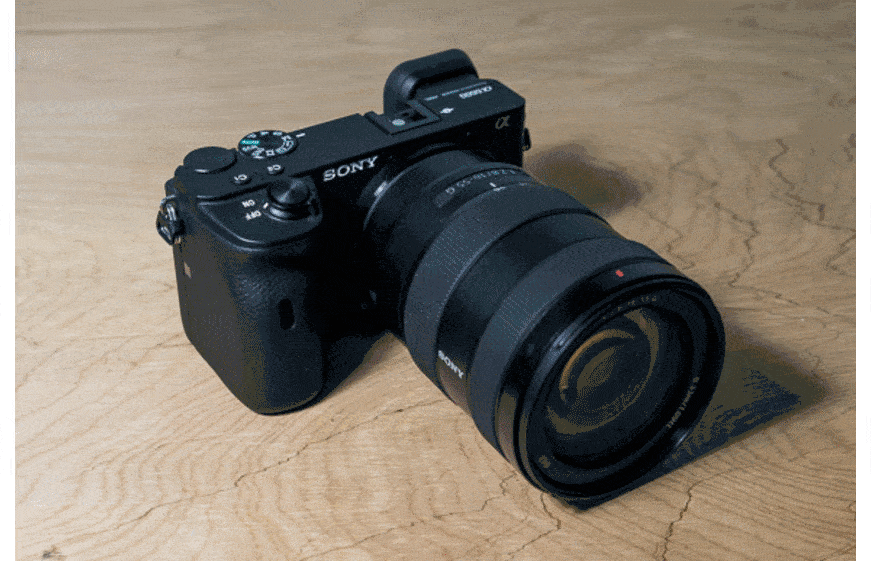
The Sony a6600 offers a great combination of compact size and power.
It’s customizable, with three custom buttons on the body to tailor-make your shooting experience, and a tilt-able rear touchscreen will help you shoot from tight angles.
While this compact camera is still a winner thanks to its autofocus and the quality of its images, it is so compact that it’s best paired with smaller lenses.
Something like the Tamron 150-500mm works well, while the FE 200-600mm is too big.
Pro tip: AF-S would be the best focus mode for a perched bird or something that’s not moving. For fast-flying birds, choose Group-Area Autofocus in AF-C (continuous focus) at the highest frame rate.
What Features Are Important in a Camera for Birding?
Birding, bird watching or bird photography, require specific camera features to capture the beauty, detail, and dynamism of avian subjects.
Here are the essential features to consider when choosing a camera for birding:
- Fast Autofocus (AF) System: Birds are often fast-moving subjects, so a camera with a quick and accurate autofocus system is crucial. Look for cameras with multiple AF points and advanced AF tracking capabilities for avian photography.
- High Burst Rate: A high frames-per-second (fps) rate allows you to capture multiple shots in quick succession, increasing the chances of getting that perfect shot, especially during flight or action moments.
- High Megapixel Count: More megapixels can provide greater detail, which is especially useful when cropping images in post-processing to get closer shots of distant birds for ornithological imagery.
- Good ISO Performance: Birding often involves varying lighting conditions, from the bright outdoors to shaded forested areas. A camera with good ISO performance ensures clearer shots with less noise in low-light conditions.
- Telephoto Lens Compatibility: For bird photography, a good telephoto lens is essential. Ensure the camera is compatible with lenses that offer at least 300mm to 600mm focal lengths.
- Image Stabilization: This feature helps reduce the effects of camera shake, especially when using long telephoto lenses without a tripod.
- Weather Sealing: Birds won’t always be out in perfect weather. A weather-sealed camera ensures durability and protection against elements like dust, moisture, and sudden downpours.
- Swivel or Tilt LCD Screen: This is particularly useful for shooting at different angles, especially when birds are perched high in trees or in challenging terrains.
- Large Buffer: When shooting in burst mode, a large buffer ensures the camera can handle and store several high-quality images quickly without slowing down, which can be useful for birdlife imagery.
- RAW Shooting Capability: Shooting in RAW format allows for more flexibility in post-processing, enabling adjustments to exposure, color balance, and other parameters without compromising image quality.
- Long Battery Life: Extended shooting sessions require a camera with good battery life, ensuring you don’t miss out on rare bird sightings.
Cameras for Bird Photography: Which Type is Best: Superzoom, Mirrorless, or DSLR?
Superzoom cameras are often favored by beginners or those on a budget.
They come with built-in long zoom lenses, allowing you to get close to distant birds without needing to invest in additional lenses.
While convenient and generally more affordable, superzoom cameras may lack some of the advanced features and image quality found in other types.
Mirrorless cameras have become increasingly popular for birding, offering a lighter and more compact design compared to DSLRs.
They often provide fast autofocus, high burst rates, and excellent image quality.
The electronic viewfinder in mirrorless cameras can also offer real-time previews of how changes to settings (like exposure) will affect the image.
However, the lens selection for birding might be more limited, and battery life can be shorter compared to DSLRs.
DSLRs are a traditional choice for many bird photographers, especially professionals or serious enthusiasts.
They offer robust performance, a wide selection of compatible telephoto lenses, and often have superior battery life.
The optical viewfinder in DSLRs can be preferable for tracking fast-moving birds.
While they tend to be bulkier and possibly more expensive (especially when adding quality lenses), many bird photographers appreciate the control and quality that DSLRs offer.
FAQs for Bird Photographers
Using any of the auto modes can be risky because, although there’s less to think about, the changes they can make to compensate for your settings can often ruin your shot.
If you’re shooting any bird, but especially a rare one, that’s a disaster.
The settings will depend very much on which bird you’re shooting, whether it’s flying or not, and which location you’re shooting in.
But, generally, you’ll want to be in manual mode, and controlling your settings, or at least the aperture and shutter speed.
If you want a bit less to think about, you can always use Auto ISO.
As you can see from this guide, there are quite a few cameras that are great for bird photographers on a budget.
What camera should I get for bird photography?
The camera you should get is the one you can afford, and the one that suits your needs.
If you’re starting out, you don’t need the Sony A1, as that has the price and features for pros.
Start small and build up.
What camera has the best bird eye autofocus?
All of the cameras in this guide have very capable autofocus.
Generally speaking, Sony is well-known for the quality of their autofocus, especially when it comes to the tracking modes. Recent models even include face tracking for animals, including birds.
How much zoom do I need for bird photography?
The more zoom the better. As a general rule, you’ll need a minimum of 200mm to start with.
If you don’t have zoom, as long as you have a camera with a high-resolution sensor, you can always crop in quite far, though.
What is the best point-and-shoot camera for birding?
Out of the cameras in this guide, it would either be the Panasonic LUMIX FZ80, or the Nikon Coolpix P950, as both of them have humungous in-built telephoto zoom lenses.





